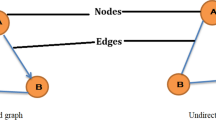Abstract
In the process of data collection for wireless sensor networks based on large-area multiple nodes, the utilization rate and energy efficiency of existing methods of nodes deployed in the network are relatively low. Therefore we propose hybrid layer-cluster topology method for large multi-node deployment in wireless sensor network in this paper. Data acquisition for each region is assigned to each cluster which is composed of cluster head node and ordinary nodes divided by the hexagon deployment strategy. Star-structure network is adopted between ordinary nodes and cluster head node, each cluster is connected by mesh-structure network. On this basis, the hybrid hop routing method is used to communicate with base station based on critical distance, which saves the cost and improves the efficiency of the network perception. The experimental results show that the layer cluster hybrid topology model based on hexagon partition can reach the coverage rate of 100 % with the energy utilization rate increasing by 5.4 and 8.6 % on the condition of relatively few deployed sensor nodes, compared to quadrilateral partition and random deployment model. This method overcomes the disproportion of the energy consumption and improves the information redundancy in the process of transmission, and can cover the maximum working area along with the longest survival time of the network by reducing energy consumption. This method is an effective solution to the problem of node deployment of large-scale sensor nodes in wireless sensor networks.
















Similar content being viewed by others
References
Shah, R.C., & Rabaey, J.M. (2013). Energy aware routing for low energy ad hoc sensor networks. Proceedings of the 3rd IEEE Wireless Communications and Networking Conference (WCNC) (pp. 151–165). Orlando.
Lindgren, A., Doria, A., & Schelen, O. (2012). Probabilistic routing in intermittently connected networks. Mobile Computing and Communications Review, 7(3), 19–20.
Sinan, I., & Mehmet, Y. D. (2011). Cross layer load balanced forwarding schemes for video sensor networks. Ad Hoc Networks, 19(3), 265–284.
Moller, S., Newe, T., & Lochmann, S. (2012). Prototype of a secure wireless patient monitoring system for the medical community. Sensorss & Sactuators A Physical, 173(1), 55–65.
Duan, S., & Mu, J. (2014). Algorithm research of the deployment of mobile ad hoc network service nodes of evolutionary computation. Computer Simulation, 31(4), 307–309.
Carrillo, A., Martłn-Domłnguez, I. R., Glossman, D., et al. (2005). Study of the effect of solvent induced swelling on the resistivity of butadiene based elastomers filled with carbon particles: Part I. Elucidating second order effects. Sensors & Actuators A Physical, 119, 157C168.
Lin, F. Y. S., & Chiu, P. L. (2005). A near-optimal sensor placement algorithm to achieve complete coverage-discrimination in sensor networks. IEEE Communications Letters, 9(1), 43–45.
Adlakha, S., & Srivastava, M. (2003). Critical density thresholds for coverage in wireless sensor networks. In Wireless communications and networking 2003. WCNC 2003 (vol. 3, pp. 1615–1620), 1EEE.
Dhillon, S. S., & Chakrabarty, K. (2003). Sensor placement for effective coverage and surveillance in distributed sensor networks. In Wireless communications and networking 2003. WCNC 2003 (vol. 3, pp.1609–1614),1EEE.
Chakrabarty, K., Iyengar, S. S., Qi, H., et al. (2002). Grid coverage for surveillance and target location in distributed sensor networks. IEEE Transactions on Computers, 51(12), 1448–1453.
Tong, M., Hu, Z., Gu, j., et al. (2010). Picocell seamless coverage based on adaptive extended cell. Optical Communication Technology, 34(5), 50–52.
Chen, Y., Chen, J., Wei, L., et al. (2014). Mobile wireless sensor network lifetime optimization algorithm based on grid. Journal of Electronics & Information Technology, 10, 2370–2378.
Shi, Z., Fan, X., Jiang, Y., et al. (2013). Research on energy balanced hierarchical clustering of single hop and multi hop routing algorithm for mixed WSN. Manufacturing Automation, 15, 53–56.
Guerroumi, M., Badache, N., & Moussaoui, S. (2015). Mobile sink and power management for efficient data dissemination in wireless sensor networks. Telecommunication Systems, 58(4), 279–292.
Mehmood, A., Khan, S., Shams, B., et al. (2013). Energy efficient multi level and distance aware clustering mechanism for WSNs. International Journal of Communication Systems, 28, 972–989.
Praveena, N. G., & Prabha, H. (2014). An efficient multi-level clustering approach for a heterogeneous wireless sensor network using link correlation. EURASIP Journal on Wireless Communications, 1, 1–10.
Pierobon, M., Jornet, J. M., Akkari, N., et al. (2014). A routing framework for energy harvesting wireless nanosensor networks in the Terahertz Band. Wireless Networks, 20(5), 1169–1183.
Colonnese, S., Cuomo, F., & Member, S. (2013). An empirical model of multiview video coding efficiency for wireless multimedia sensor networks. IEEE Transactions on Multimedia, 15(8), 1800–1814.
Liu, A. Q., Zhang, X. M., Li, J., et al. (2003). Single-/multi-mode tunable lasers using MEMS mirror and grating. Sensors & Actuators A Physical, 108, 49–54.
Author information
Authors and Affiliations
Corresponding author
Rights and permissions
About this article
Cite this article
Jia, D., Li, M., Zhu, H. et al. Layer-Cluster Topology Sensor Node Deployment for Large-Scale Multi-Nodes of WSN. Wireless Pers Commun 94, 3035–3056 (2017). https://doi.org/10.1007/s11277-016-3764-0
Published:
Issue Date:
DOI: https://doi.org/10.1007/s11277-016-3764-0




